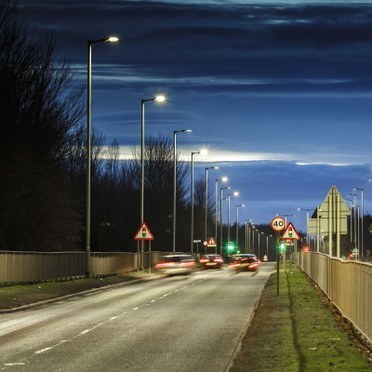As the speed of network and the issue of tariffs were once again mentioned by Premier Li Keqiang at the State Council executive meeting, the three major operators finally opened the "self-revolution" and announced a substantial speed increase and fee reduction.
Judging from the plans announced by the three major operators, the strength of the reform can be described as “unprecedentedâ€, involving infrastructure construction, fixed-line broadband, and mobile communications.
Speed ​​and tariffs become the heart of the prime minister
In the past two years or so, Premier Li Keqiang has repeatedly mentioned that China's communications infrastructure is too backward, and it is necessary to increase broadband construction and urge the issuance of 4G licenses.
? July 2013 State Council executive meeting
Deploy and implement the “Broadband China†strategy, accelerate the construction and upgrade of network and communication infrastructure; promote fiber-to-the-home, greatly increase the network speed; improve the coverage of 3G networks and service quality, and promote the issuance of 4G licenses during the year. Promote the integration of the three networks in an all-round way and promote it to the whole country during the year; encourage private capital to enter the basic telecom operation market by means of equity participation.
The second meeting of the 12th National People's Congress in March 2014
In the new year, we must promote information consumption, implement the "Broadband China" strategy, accelerate the development of the fourth-generation mobile communications, promote the city's 100-megabit fiber project and broadband rural projects, and significantly increase the Internet speed.
? Summer Davos Opening Ceremony in September 2014
We will seize the opportunities of the world's new technology and industrial revolution and accelerate the construction of broadband China and smart China.
The third meeting of the 12th National People's Congress in March 2015
Fully promote the integration of the three networks, accelerate the construction of fiber-optic networks, and significantly increase the speed of broadband networks.
? The first quarter of April, 2015 economic situation symposium
China's information infrastructure is backward, we can hardly imagine it; we have increased information infrastructure and increased network bandwidth. In this respect, we have great potential and space. Many people now ask where to go: There is no WiFi ", because our traffic costs are too high!
Under the urging of Premier Li Keqiang’s three-and-a-half application, the three major operators finally released big moves. The reform dimensions of the three major operators are basically the same, and they have done their homework in terms of traffic price concessions, opening idle time traffic, and launching traffic uncleared. In particular, China Mobile is focusing on 4G services in many aspects.
At present, China Mobile's 4G users account for more than 90% of the total number of users in China. China Mobile has launched a more substantial offer for 4G services, which will help to further consolidate China Mobile's advantage in 4G.
In terms of fixed-line broadband, China Mobile’s access to fixed-line service licenses has not been long (distributed with 4G licenses in December 2013), and fixed-line services are not prominent in China Mobile’s business system. In the first quarter earnings report, the operational data of the business was not even listed. Therefore, China Mobile did not announce specific measures related to fixed-line broadband.
The data shows that China Unicom's first quarter net revenue was 23.163 billion yuan, accounting for 31% of total revenue; China Telecom's fixed-line broadband subscribers reached 108 million, and its business income increased slightly, effectively offsetting the impact of fixed-line voice loss. .
Therefore, it is not difficult to understand why China Unicom and China Telecom have to reduce broadband tariffs and speed up the network in different ways in the mobile era.
Whether in fixed-line construction or mobile network construction, the three major operators have carried out detailed planning. Especially in the 4G aspect, China Unicom and China Telecom obviously do not want China Mobile to be a big one, and this year also opened the "Great Leap Forward" 4G facilities.
The central and western regions and rural areas are still "network weaknesses"
Although the price cuts announced by the three major operators have caused a lot of shocks, we still have to face up to a regional problem: the development of the network in the central and western regions and rural areas is still not satisfactory. According to the latest data released by the Broadband Development Alliance, the average available download rate for fixed broadband users in China is 5.12 Mbit / s. As can be seen from the table, the average available download rate in the eastern region is significantly higher than that in the central region and the west, while the average downloadable speed in the central region and the west is lower than the national average.
In terms of the distribution of provinces, the provinces in the top 10 with the average available download rate accounted for 80% of the provinces in the eastern region, while in the bottom 10, the provinces in the central and western regions accounted for 80%. It can be seen that the construction of network infrastructure in the eastern region is far more developed than in the central and western regions.
In addition, in terms of regional distribution, rural infrastructure construction also lags behind urban areas. According to the latest data released by the China Internet Network Information Center (CNNIC), as of December 2014, the proportion of rural netizens in China was 27.5%, far below the city level.
CNNIC said that under the background that the overall netizen's growth rate has been narrowing year by year and the urbanization rate has been steadily increasing, the difficulty of rural non-netizens has also increased. In the future, further policies and market incentives will be needed to promote the growth of rural netizens.
CNNIC predicts that the difference in urban and rural Internet penetration rate is still expanding. In 2014, the Internet penetration rate in urban areas exceeded 34% in rural areas. The root cause of the gap is the imbalance of regional economic development. The method of properly solving the urban-rural divide still needs further exploration. Innovation.
This issue has already attracted the attention of the Ministry of Industry and Information Technology. In its 2015 work plan, it is mentioned that this year, more than 600,000 new 4G base stations will be built. The 4G network will cover county towns and developed townships, and at the same time, 14,000 administrative villages will be added broadband.
Netizens are hot on the reform plan: praise the "no-zero flow" for "not clearing"
After the operators announced the speed-up and price-cutting schemes, netizens also launched a hot discussion on social media. The most important focus was “the traffic is not cleared and transferred.â€
For a long time in the past, the operator's "liquidation at the end of the month" system has been squandered by users and even complained to the court. CCTV's "Weekly Quality Report" has also reported on this. Professor Liu Junhai, vice president of the China Consumers Association, bluntly stated that "flow clearing" is a typical overlord clause.
At the State Council executive meeting a few days ago, Premier Li Keqiang pointed out that it would like to launch services such as unclear traffic and traffic transfer. In the plan announced by the operator, we finally saw the relevant measures. For example, China Mobile launched a traffic trading platform that can support customers' online traffic purchase, traffic transfer, and traffic red envelope distribution to provide customers with diverse options. Compared with the previous "Overlord Clause", operators have taken a big step worthy of "praising".
Of course, in many price reduction schemes, it is inevitable that there will be users' spit, which is more typical of “night trafficâ€. Take China Mobile as an example. Customers can get 1GB of night traffic for only 10 yuan per month (23:00 to 7:00 the next day).
Many netizens said: "This time period is basically at home, and now Wifi has been basically popularized, and mobile data traffic is not used." Even radical users shouted: "Do you want us to sleep? You want us to US time?"
It seems that there are still many problems that need to be solved before operators.
summary
I have to say that the price reduction and speed increase of operators in this round is really quite a fight, but we still have to face up to the gap with other countries in the world. Ending with a set of data from Akamai, a content distribution network provider, may make us more aware of the reality:
• The average speed of China's mainland is 3.4Mbps, the Asia-Pacific region is ranked 10th, and the global ranking is 82nd.
• The peak speed of China's mainland is 17.8Mbps, the Asia-Pacific region is ranked 11th, and the global ranking is 95.
• 10Mbps in mainland China has an Internet coverage rate of 1.1%, Asia Pacific is the 10th, and the world is 64th, which is more than 70 times different from the first Korean.
• The average speed of mobile networks in China is 5Mbps, ranking 6th in Asia Pacific.
MOSO provides a wide range of IP67 Outdoor LED Driver supporting 0-10V, PWM, resistor and DALI dimming from 25W to 320W. All MOSO led driver for street lighting use aluminum metal case and are fully glue-potted for good dissipation. Surge protection is also built in outdoor led driver to protect street lights from lightning.


To meet different demand from different market, MOSO developed several series outdoor led driver supporting 108-305Vac, 90-305Vac, 249-528Vac different input ranges and got global certificates like CE, TUV, UL, ENEC, SAA, BIS, KC, etc..
MOSO has set several distributors in Europe, United States, Latin America, Asia and Australia. All MOSO outdoor led driver provide 5 years global warranty. In case of any failure, customers can get replacement either from MOSO directly or any one of MOSO distributors.
MOSO always dedicates to providing professional outdoor lighting solutions. Please feel free to contact our sales team if you need any support!
Street Light LED Driver,Outdoor LED Driver,Waterproof Street Light LED Driver,Quality Street Light LED Driver
Moso Electronics , https://www.mosoleddriver.com